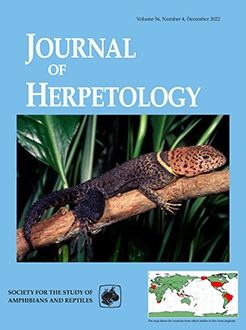Prairie habitat loss in the United States has led to population declines in many prairie-associated species, including Ornate Box Turtles (Terrapene ornata). Northwest Arkansas is an intergrade zone between the prairie-dwelling T. ornata and the more forest-associated Three-Toed Box Turtle (Terrapene carolina). As such, limited information exists on the potential differences in physiology and thermal ecology between the two box turtle species and how those differences might influence their habitat use. We addressed gaps in our knowledge of the thermal and spatial ecology of T. ornata and T. carolina with a three-part study. First, we compared the thermal profiles of refugia, open, and vegetated microhabitats across degraded prairie, restored prairie, and adjacent forest macrohabitats using operative temperature models and a linear mixed effect model. Second, we measured total evaporative water loss of both species across a range of body sizes. Finally, we fitted a subset of turtles with iButton data loggers and monitored them in the field to examine carapace temperatures and habitat use. Operative temperature models recorded high, largely homogeneous temperatures across microhabitats in degraded prairie and heterogeneous temperatures across restored prairie microhabitats, while forest habitat maintained stable, cool temperatures. Both species exhibited similar evaporative water loss rates; however, T. ornata experienced a broader range of temperatures in the field. Terrapene ornata were exclusively found in prairie habitat, whereas T. carolina was often found in forested habitats and subsurface refugia. Our results demonstrate key differences in box turtle thermal biology and highlight suboptimal thermal characteristics in degraded prairie and forest habitat that should be considered in prairie restoration and management for T. ornata conservation.
BioOne.org will be down briefly for maintenance on 17 December 2024 between 18:00-22:00 Pacific Time US. We apologize for any inconvenience.
How to translate text using browser tools
28 March 2023
Effects of Prairie Degradation and Restoration on Box Turtle Thermal Ecology
Gabriel L. Yerdon,
Ethan J. Royal,
Chelsea S. Kross,
John D. Willson
ACCESS THE FULL ARTICLE

Journal of Herpetology
Vol. 57 • No. 1
March 2023
Vol. 57 • No. 1
March 2023




